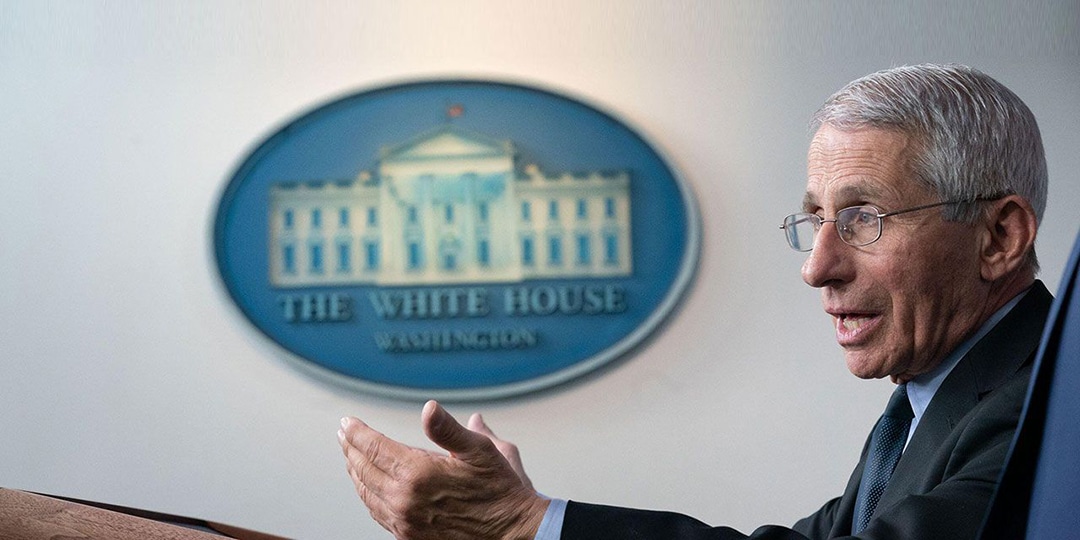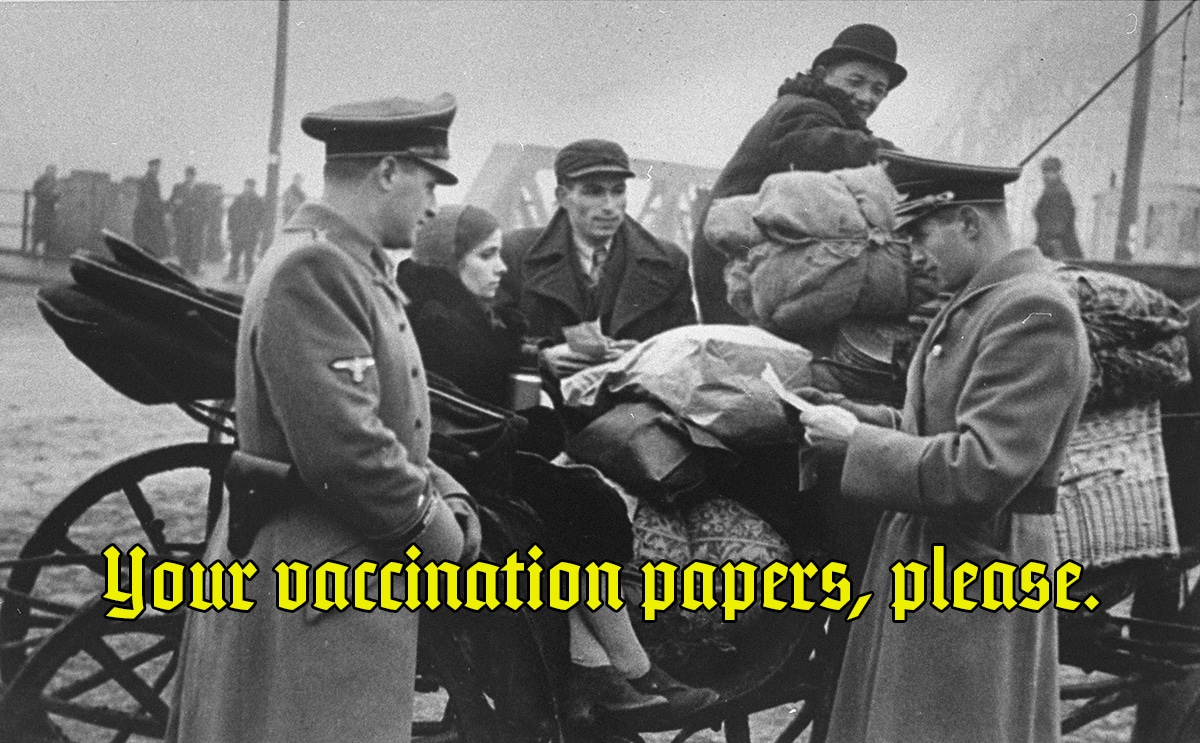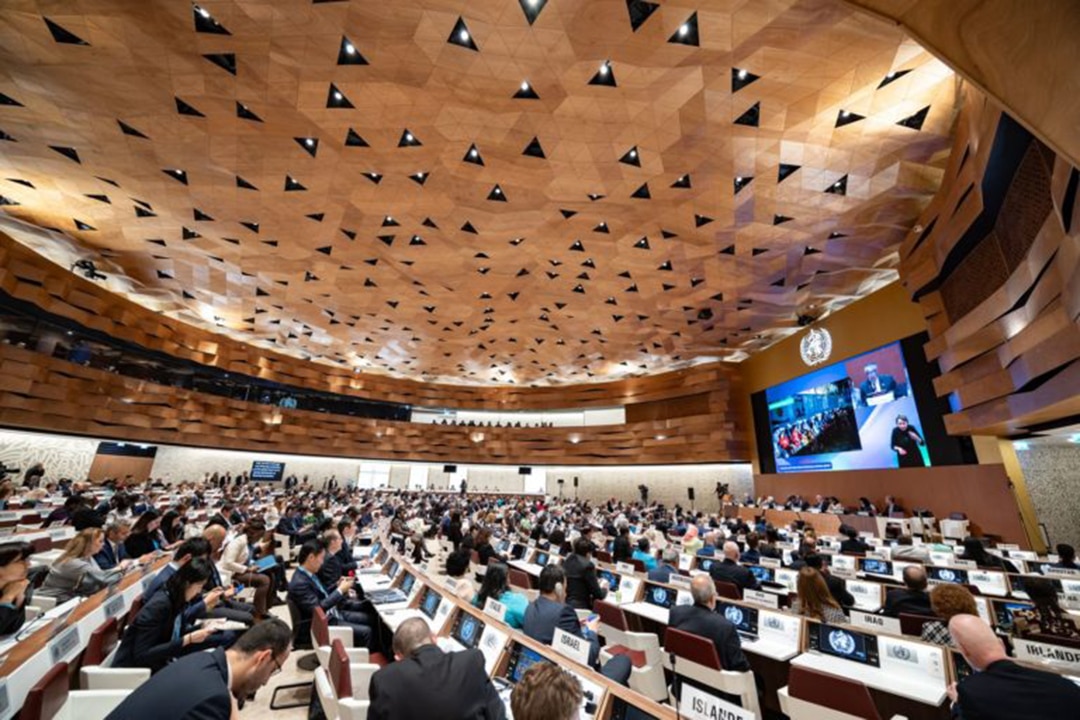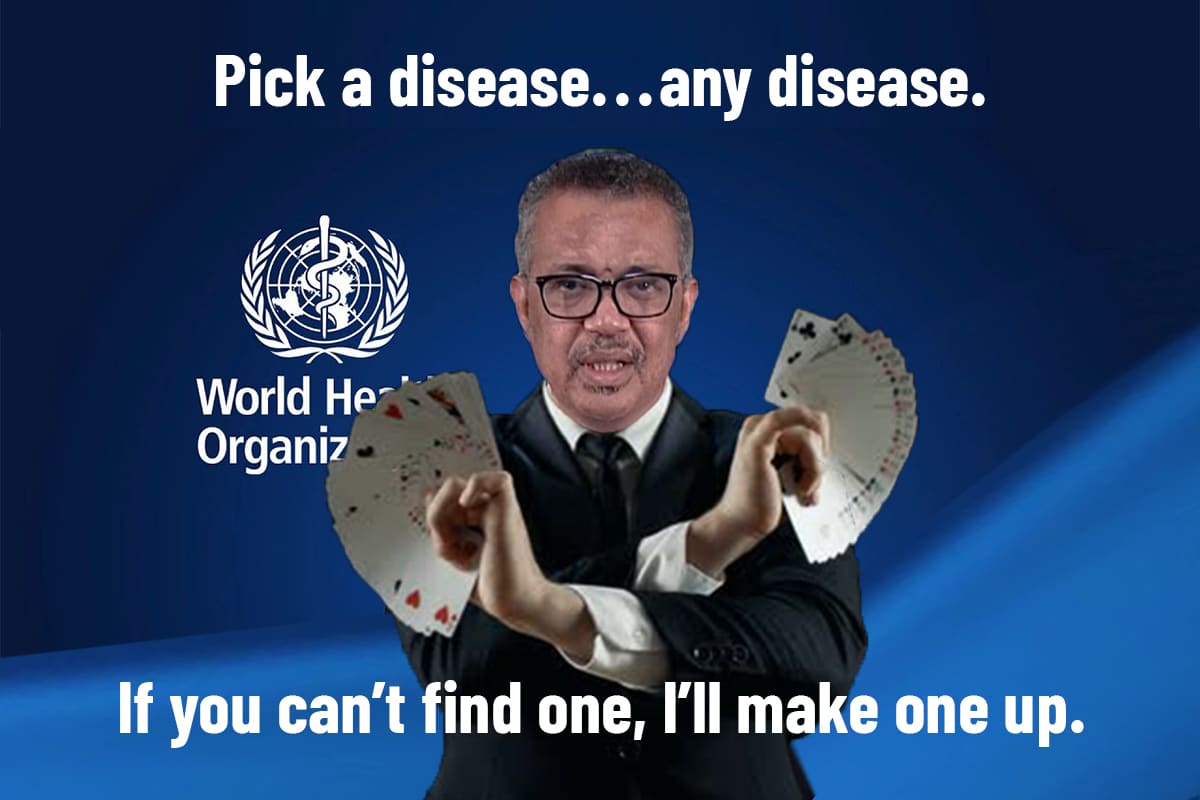
Won’t Get Fooled Again
by John Tierney | City Journal, Spring 2022
More than a century ago, Mark Twain identified two fundamental problems that would prove relevant to the Covid pandemic. “How easy it is to make people believe a lie,” he wrote, “and how hard it is to undo that work again!” No convincing evidence existed at the start of the pandemic that lockdowns, school closures, and mask mandates would protect people against the virus, but it was remarkably easy to make the public believe that these policies were “the science.” Today, thanks to two years of actual scientific evidence, it’s clearer than ever that these were terrible mistakes; yet most people still believe that the measures were worthwhile—and many are eager to maintain some mandates even longer.
Undoing this deception is essential to avoid further hardship and future fiascos, but it will be exceptionally hard to do. The problem is that so many people want to keep believing the falsehood—and it’s not just the politicians, bureaucrats, researchers, and journalists who don’t want to admit that they promoted disastrous policies. Ordinary citizens have an incentive, too. Adults meekly surrendered their most basic liberties, cheered on leaders who devastated the economy, and imposed two years of cruel and unnecessary deprivations on their children. They don’t want to admit that these sacrifices were in vain.
They’re engaging in “effort justification,” a phenomenon famously demonstrated in 1959 with an experiment involving a tame version of a hazing ritual. Social psychologists Elliot Aronson and Judson Mills offered female undergraduate students a chance to join a discussion group on the psychology of sex, but first some of them had to pass an “embarrassment test.” In the mild version of the test, some students read aloud words like “prostitute” and “petting.” Others had to pass a more severe version by reading aloud from novels with explicit sex scenes and lots of anatomical obscenities (much more embarrassing for a young woman in the 1950s than for students today). Afterward, all the students, including some who hadn’t been required to pass any test, listened in on a session of the discussion group, which the researchers had staged to be a “dull and banal” conversation about the secondary sexual behavior of lower-order animals. The participants spoke haltingly, hemmed and hawed, didn’t finish their sentences, mumbled non sequiturs, and “in general conducted one of the most worthless and uninteresting discussions imaginable.”
But it didn’t seem that way to the women who’d undergone the severe embarrassment test. They were far more likely than the other students to give the discussion and the participants high ratings for being interesting and intelligent. The experiment confirmed the then-novel theory of cognitive dissonance: the young women didn’t like thinking that they’d gone through an ordeal for the sake of a worthless reward, so they avoided this mental discomfort (cognitive dissonance) by rewriting reality to justify their effort. Other studies showed the same effect in people who had undergone real-life initiation rituals to join fraternities and other groups. The more effort involved in the initiation ritual, the more valuable seemed the reward of membership.
Researchers also reported that “shared dysphoric experiences” produced “identity fusion” within a group, making members more loyal and more willing to make further sacrifices for their comrades. Thus, fans of English soccer teams who suffered together through a losing season were more devoted to one another than were fans of a winning team, and members of Brazilian jujitsu clubs who endured a painful graduation ceremony—walking a gauntlet while being whipped by belts—became more willing to make charitable donations to their club than were members at similar clubs with less extreme ceremonies.
If one brief bad experience can transform people’s thinking, imagine the impact of the pandemic’s ceaseless misery. It’s been a two-year-long version of Hell Week, especially in America’s blue states, with Anthony Fauci and Democratic governors playing the role of fraternity presidents humiliating the pledges. Americans obediently donned masks day after day, stood six feet apart, disinfected counters, and obsessively washed their hands while singing “Happy Birthday.” They forsook visits to friends and relatives and followed orders to skip work and church. They forced young children to wear masks on the playground and in the classroom—a form of hazing too extreme even for Europe’s progressive educators.
Some Americans refused to submit to these rituals, but their resistance only intensified solidarity among the faithful. The most zealous kept their masks on even after they were vaccinated, even when walking alone outdoors. The mask became their version of a MAGA hat or a fraternity brother’s ring; some have vowed to keep wearing theirs long after the pandemic. They’ve already called for permanent masking on airplanes, trains, and buses, and they’ll probably clamor for more school closures and lockdown measures during future flu seasons.
Facts alone will not be enough to change their minds. To undo the effects of the hazing, we need to ease their cognitive dissonance by showing that they’re not to blame for their decisions. The mental mistakes were not made by citizens who dutifully sacrificed for two years. They assumed that the Centers for Disease Control knew how to control disease and that scientists and public-health officials would provide sound scientific guidance about public health. Those were reasonable assumptions. They just turned out to be wrong.
After a great disaster, the traditional response is to appoint a blue-ribbon panel to investigate it, and a bill has already been introduced in Congress to create a Covid commission. In theory, this could be a worthy public service, allowing experts to sift the evidence impartially and determine which strategies worked, which ones failed, how much needless damage was done—and whom to blame for it. But in practice, which experts would the current Democratic administration or Congress appoint? Presumably, the pillars of the public-health establishment—the same luminaries whose advice was followed so calamitously the past two years.
“CDC leaders used unrealistic projections to claim unprecedented powers and experiment with untested strategies.”
Before Covid, the United States drew up plans for a pandemic and maintained the world’s most lavishly funded scientific and medical institutions to deal with one. When the coronavirus arrived, the leaders of those institutions should have identified who was at serious risk and who wasn’t and adopted proven strategies to protect the vulnerable while doing the least harm to everyone else. They should have monitored the effects of their policies and adjusted them based on what they learned. By honestly communicating the risks and considering the overall public good, they could have tamped down needless fear and united the country behind their efforts.
Instead, they proceeded to ignore their own plans as well as the basic principles of science and public health. Leaders of the CDC terrified the public with worst-case scenarios based on computer models—and then used those blatantly unrealistic projections to claim unprecedented powers and experiment with untested strategies. Their pre-Covid planning scenarios had rejected business and school closures even for a pandemic as deadly as the Spanish flu of 1918, but when the Covid-19 pandemic came, they imposed lockdowns without even pretending to weigh the hypothetical benefits against the tangible economic, medical, and social costs—not to mention the intangible costs in emotional hardship and lost liberty. Randomized clinical trials conducted before the pandemic had repeatedly shown that masks did little or no good at preventing viral spread, but the CDC proclaimed them effective against Covid and promoted mask mandates nationwide. As the pandemic wore on, federal health officials looked for excuses to justify the lockdowns and mandates, hyping flawed studies and cherry-picked data, while failing to sponsor rigorous research testing their strategies.
They stubbornly ignored the hundreds of studies around the world showing that, except in a few isolated places, lockdowns did not reduce Covid mortality and that mask mandates were generally ineffective and senselessly cruel in classrooms. The most glaring evidence came from places with the least restrictive policies, like Florida, along with the Nordic countries Sweden, Finland, and Norway, which avoided lockdowns and mask mandates—yet did as well as, or better than, the average in preventing both Covid deaths and overall mortality during the course of the pandemic.
Instead of heeding all this evidence of their mistakes, federal officials did their best to suppress it and silence dissenters. Francis Collins, the head of the National Institutes of Health, wrote to Anthony Fauci in October 2020 urging “a quick and devastating published takedown” of the “three fringe epidemiologists” responsible for the Great Barrington Declaration. These three researchers—from the “fringe” institutions of Harvard, Stanford, and Oxford—criticized the deadly harms of the lockdowns and urged an alternative strategy of focusing protection on the high-risk elderly, allowing natural immunity to grow among the younger population at low risk. Fauci and Collins went on a media offensive, dismissing the focused-protection strategy as “very dangerous” and “not mainstream science.” Other scientists quickly joined the attack on the Great Barrington Declaration by signing a rebuttal, the John Snow Memorandum, which asserted that lockdowns were effective and dismissed the idea of natural immunity, claiming that “there is no evidence for lasting protective immunity to SARS-CoV-2 following natural infection.”
It was a remarkably irresponsible claim, given already-existing evidence at the time (the fall of 2020) that people’s immune systems developed defenses after a Covid infection. It would have been surprising if an infection didn’t produce durable protection. Yet this denial of natural immunity appeared in The Lancet and was signed by thousands of scientists and doctors, including Rochelle Walensky, who enshrined this unscientific notion as CDC policy when she became the agency’s leader during the Biden administration. It didn’t matter that natural immunity was repeatedly shown to be stronger and longer-lasting than vaccine immunity, or that other countries exempted people with natural immunity from vaccine mandates. The Biden administration insisted on vaccinating everyone—and firing workers who refused, including hospital staff and other essential workers whose prior Covid infections gave them stronger immunity than their vaccinated colleagues. Instead of uniting Americans against the virus, public-health officials chose painful policies that divided the faithful from the disobedient.

Americans obediently forced young children to wear masks on the playground and in classrooms—a restriction too extreme even for Europe’s progressive educators. (JOHN TLUMACKI/THE BOSTON GLOBE/GETTY IMAGES)
The public needs to learn what went wrong during the pandemic, but they’re not going to hear it from the Biden administration. It rewarded Fauci for his failures by giving him a new title, Chief Medical Advisor to the President, and would surely resist any serious investigation of its Covid strategies. Republicans could start the process if they win control of Congress in November and establish a Covid commission, but they’d be taking on the federal bureaucracy as well as the public-health establishment. Scott Atlas, the health-policy analyst from the Hoover Institution who joined the Trump administration’s Covid task force and fought unsuccessfully against Fauci’s pandemic policies, says that his experience in Washington has convinced him that any government-run commission would be a mistake.
“It’s massively naïve to think that our government will do anything objective,” Atlas says. “Any U.S. government panel would be viewed as, or be in reality, 100 percent partisan. It could be smarter to have an international organization do it, looking at the overall questions of management, because if it’s only an assessment of the U.S., then it naturally becomes a political blame game.” But which international organization could be trusted to do a fair investigation? The obvious candidates, like the World Health Organization or the World Bank, would presumably rely on establishment figures loath to admit their mistakes. And even if they honestly evaluated the pandemic strategies, how much impact would the report have? The mainstream press would probably either ignore it, as it ignored a recent meta-analysis concluding that lockdowns had “little to no effect” on Covid mortality, or attack it with the same tactics used to smear the Great Barrington Declaration as “not mainstream.”
The Great Barrington scientists’ ideas about focused protection and natural immunity have been vindicated—unlike the counterclaims and unproven strategies promoted in the John Snow Memorandum—but these researchers were no match for their media-savvy opponents, as Stanford’s John Ioannidis recently concluded after analyzing the credentials of the two sides. By considering how often the scientists’ research had been cited in the scientific literature, he found that the signatories of the Great Barrington Declaration included just as many top-cited scientists as did the signatories of the John Snow Memorandum. But there were a few crucial differences: the Snow signatories had many more Twitter followers, and they received a lot more attention on Twitter than in the scientific community. They had the dubious distinction of scoring much higher on a scale called the Kardashian index, named after the celebrity Kim Kardashian, which measures the discrepancy between a scientist’s social-media footprint and the citation impact of the scientist’s research. Twitter enabled activist scientists to exert an outsize impact on the public debate over Covid strategies. The lockdowns and mask mandates came to be perceived as “the science,” parroted by the mainstream press and enforced by censors on social-media platforms.
The activists kept pretending that those strategies worked, but their narrative became harder to sustain. Surveys by the Pew Research Center showed that the public’s trust in scientists rose at the start of the pandemic and then began falling. The earliest and steepest declines occurred among Republicans, so that today only 15 percent of Republicans have “a great deal of confidence” in scientists—while more than a third have “not too much” or “none at all.” Democrats remain far more trusting, but even their confidence in scientists is now lower than at the start of the pandemic.
“Public trust in science is over unless there’s a thorough review of the pandemic policies,” says Jay Bhattacharya of Stanford, one of the Great Barrington Declaration scientists. Unlike Atlas, he believes that a federal Covid commission could serve a purpose. “The harms of the lockdowns are so obvious, and the failure to protect the vulnerable so obvious, that it would be hard for a commission to whitewash the facts. It’s going to take political will, but it needs to be done to restore trust in public health.”
For now, the best opportunity for a public airing of the facts may be the 2022 election campaign. Some candidates are already attacking the lockdowns and mask mandates, and pandemic strategies could become a major issue in the 2024 presidential race, especially if Ron DeSantis runs on his success as Florida’s governor. That prospect has already inspired hit pieces in the media and attacks from Democrats like Gavin Newsom, the governor of California, which suffered one of the nation’s worst surges in unemployment during its strict lockdowns. Newsom recently defended his state’s draconian mandates by claiming that an additional 40,000 Californians would have died if he had followed Florida’s policies. But that misleading figure, repeated uncritically by journalists, was based on a crude comparison of the states’ Covid mortality rates without accounting for the larger percentage of elderly people in Florida.
When properly adjusted for the age of the population, the cumulative Covid mortality rate in Florida has been below the national average. As of late March, Florida’s rate was the 19th lowest among the states, only a little higher than California’s, which was the 14th lowest. And by a more important indicator—the rate of excess mortality, a measure of how many more deaths than normal from all causes occurred during the pandemic—Florida has fared slightly better overall than California, and notably better among the young. The rate of excess mortality among young adults has been consistently lower in Florida than in California, where the strict lockdowns presumably contributed to deaths from other causes. If California’s cumulative rate of excess mortality equaled Florida’s, about 5,000 fewer Californians would have died during the pandemic. And if California’s unemployment rate equaled Florida’s last year, 500,000 fewer Californians would have been out of work.
Those are the hard truths that Americans need to hear after two years of Covid hazing. It won’t be easy convincing them that they fell for a deception, but it can be done, as DeSantis demonstrated at a recent appearance in Florida when he urged a group of high school students on the podium to take off their masks. “We’ve got to stop with this Covid theater,” he said. “If you want to wear it, fine, but this is ridiculous.” As usual, the facts were distorted by the press, which pretended that by giving the students a choice, DeSantis was somehow guilty of “bullying”—as if these poor students hadn’t been bullied for two solid years into wearing masks that they didn’t need. Some students on the podium kept their masks on, looking like meek pledges during Hell Week, but a few were emboldened to uncover their faces and breathe fresh air. At least for the moment, they were free to wonder whether this ridiculous fraternity was worth staying in anymore.





